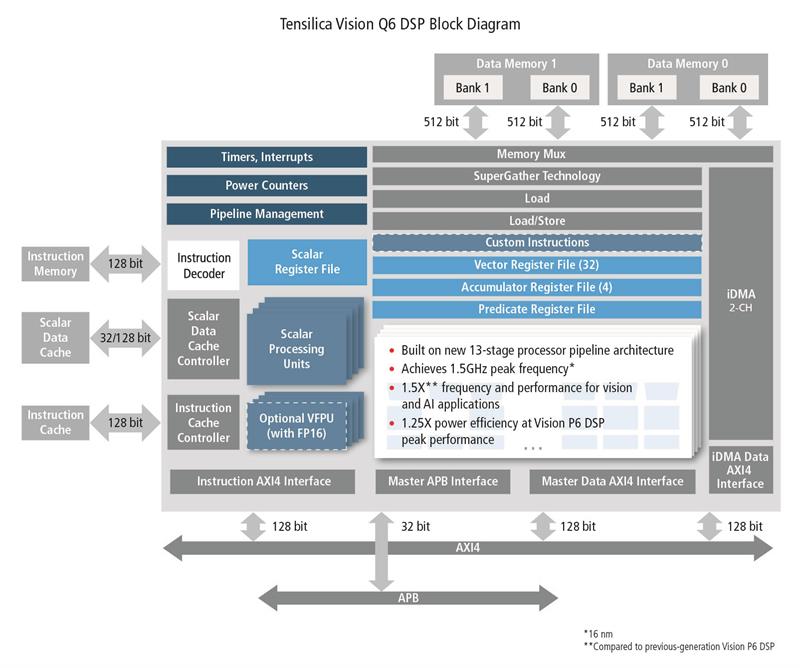The fifth-generation Vision Q6 DSP offers 1.5X greater vision and AI performance than its predecessor, the Vision P6 DSP, and 1.25X better power efficiency at the Vision P6 DSP’s peak performance and is being targeted at embedded vision and on-device AI applications in the smartphone, surveillance camera, automotive, augmented reality (AR)/virtual reality (VR), drone and robotics markets.
With a deeper, 13-stage processor pipeline and system architecture designed for use with large local memories the Vision Q6 DSP is able to achieve 1.5GHz peak frequency and 1GHz typical frequency at 16nm, in the same floorplan area as the Vision P6 DSP. As a result, designers will be able by using the Vision Q6 DSP to develop high-performance products that meet both vision and AI demands as well as power-efficiency needs.
Among additional features and capabilities an enhanced DSP instruction set provides up to 20 percent fewer cycles than the Vision P6 DSP for embedded vision applications/kernels such as Optical Flow, Transpose and warpAffine, and commonly used filters such as Median and Sobel, while 2X system data bandwidth with separate master/slave AXI interfaces for data/instructions and multi-channel DMA addresses memory bandwidth challenges in vision and AI applications. It also reduces latency and overhead associated with task switching and DMA setup.
Crucially the Q6 DSP provides backwards compatibility with the Vision P6 DSP, meaning that customers will be able to preserve their software investment for an easy migration.

The Vision Q6 DSP supports AI applications developed in the Caffe, TensorFlow and TensorFlowLite frameworks through the Tensilica Xtensa Neural Network Compiler (XNNC). The XNNC maps neural networks into executable and highly optimised high-performance code for the Vision Q6 DSP, leveraging a comprehensive set of optimised neural network library functions.
The Vision Q6 DSP also supports the Android Neural Network (ANN) API for on-device AI acceleration in Android-powered devices. The software environment also features complete and optimised support for more than 1,500 OpenCV-based vision and OpenVX library functions, enabling fast, high-level migration of existing vision applications.
The Vision P6 DSP and the Vision Q6 DSP are designed for general-purpose embedded vision and on-device AI applications requiring performance ranging from 200 to 400 GMAC/sec. With its 384 GMAC/sec peak performance, the Vision Q6 DSP is well suited for high-performance systems and applications. The Vision Q6 DSP can be paired with the Vision C5 DSP for applications requiring greater than 384 GMAC/sec AI performance.
Select customers are integrating the Vision Q6 DSP in their products, and it is now available to all customers.













